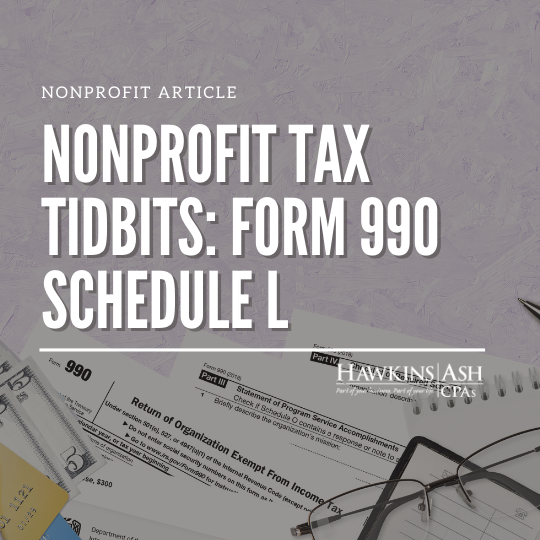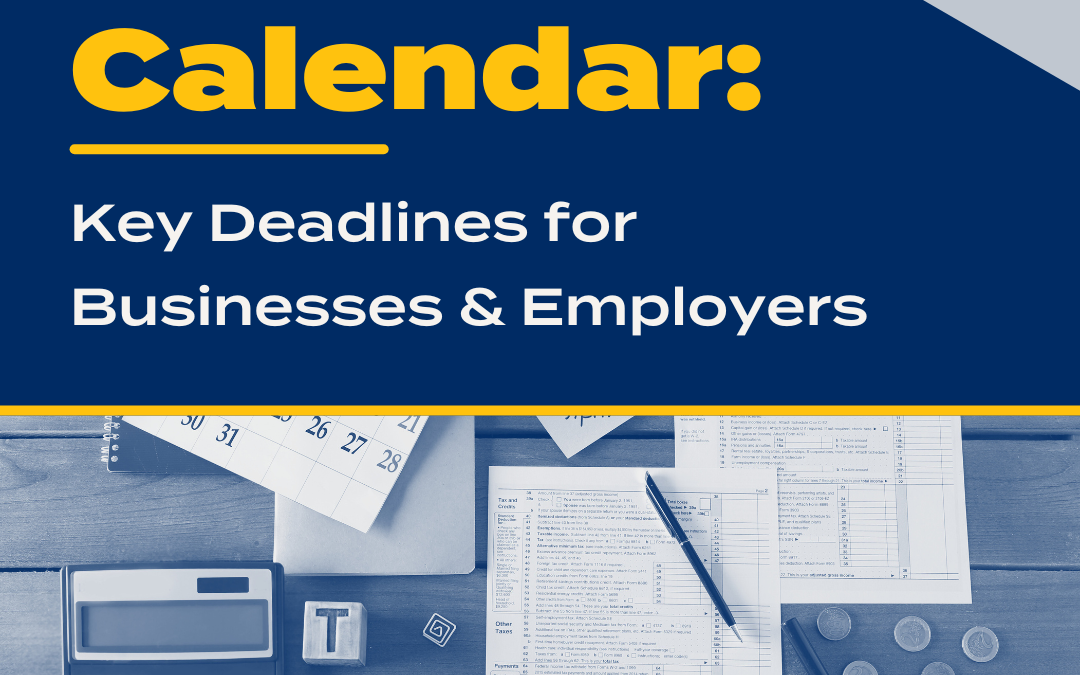The next installment in our series on the schedules of the IRS Form 990 focuses on Schedule L, Transactions with Interested Persons. Schedule L provides information on certain financial transactions between the organization and interested persons. There are four different sections to Schedule L, each part covering a different type of transaction with an interested person. Various thresholds and exceptions may determine whether a given transaction must be reported in one of these parts.
An interested person is any person who is in a position to influence the tax-exempt organization at any time during a five-year period ending on the day of the transaction or a disqualified person under section 4958. An interested person can also include a member of the disqualified person’s family or his/her business. Schedule L is also used to determine whether a voting member of the governing board is independent for reporting on Form 990, Part VIII, Compensation of Officers, Directors, Trustees, Key Employees, Highest Compensated Employees and Independent Contractors. A transaction between the organization and an interested person is only reported in one place on Schedule L. Answering questions 25-28 of Form 990 Part IV Checklist of Required Schedules will assist the organization in choosing the correct section to report these transactions.
Part I, Excess Benefit Transactions applies only to 501(c)(3), 501(c)(4) and 501(c)(29) organizations that had excess benefit transactions at any time during the five-year period. Excess benefit transactions are reported regardless of the amount. An excess benefit transaction can have serious implications for the person who benefited from the transaction, the managers of the organization and the organization. On part I, the organization discloses the disqualified person’s name, his/her relationship to the organization, a description of the transaction, whether or not the transaction has been corrected, and the amount of excise tax that was paid by the disqualified person and the organization managers.
Parts II-IV applies to all types of organizations.
Part II, Loans to and/or From Interested Persons reports details on loans including salary advances and split-dollar life insurance arrangements treated as loans. The interested person’s name, relationship to the organization, the purpose of the loan, whether the loan was to/from the organization, the original amount, as well as the current balance is detailed for each loan. Questions regarding whether the loan is in default, approved by the governing board, or if there was a written agreement in place must be answered. A loan from a 501(c) 3 organization, a governmental unit, or an exempt organization with the same tax-exempt status as the filing organization does not need to be disclosed in Part II. Only loans outstanding as of the fiscal year end need to be reported.
Part III Grants or Assistance Benefiting Interested Persons reports grants or assistance of any amount that is provided by the organization to an interested person during the organization’s tax year. Assistance can be in the form of scholarships, discounts on goods and services, prizes, or the use of facilities. The interested person’s name, relationship to the organization, amount of assistance, type and purpose of the assistance is disclosed.
Part IV Business Transactions Involving Interested Persons reports transactions that occur between the organization and interested persons that exceed the reporting thresholds. The reporting thresholds for transactions that occur between the organization and an interested person are as follows: (1) all payments during the tax year that exceeded $100,000; (2) all payments during the tax year from a single transaction that exceeded the greater of $10,000 or 1% of the filing organizations total revenue; (3) compensation payments which exceeded $10,000 during the tax year by the organization to a family member of a current or former officer, director, trustee, or key employee of the organization; (4) the organization has invested $10,000 or more in a joint venture with an interested person (whether or not during the tax year) and the profits or capital interests of each party exceeds 10% at some time during the tax year. Typically, these types of transactions should be approved by the board of directors and should be included in the minutes of the organization.
As with most schedules in the 990 series, the last schedule is a supplemental schedule which gives the organization additional space to provide any further explanation that is needed.
The organization must make a reasonable effort to ascertain the identity of interested persons. One way to accomplish this is to create a questionnaire to be filled out annually by persons who have an opportunity to influence the organization such as board members, members of management and/or substantial contributors.
If you have any questions regarding Schedule L of Form 990 or would like assistance in developing an interested person questionnaire, please contact your Hawkins Ash CPAs representative.





